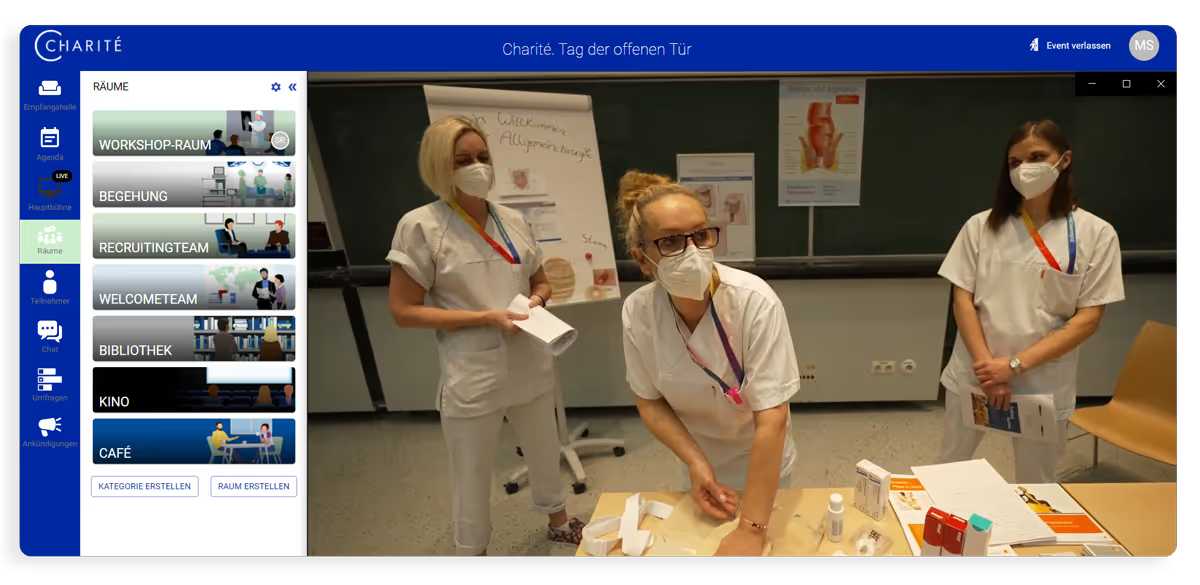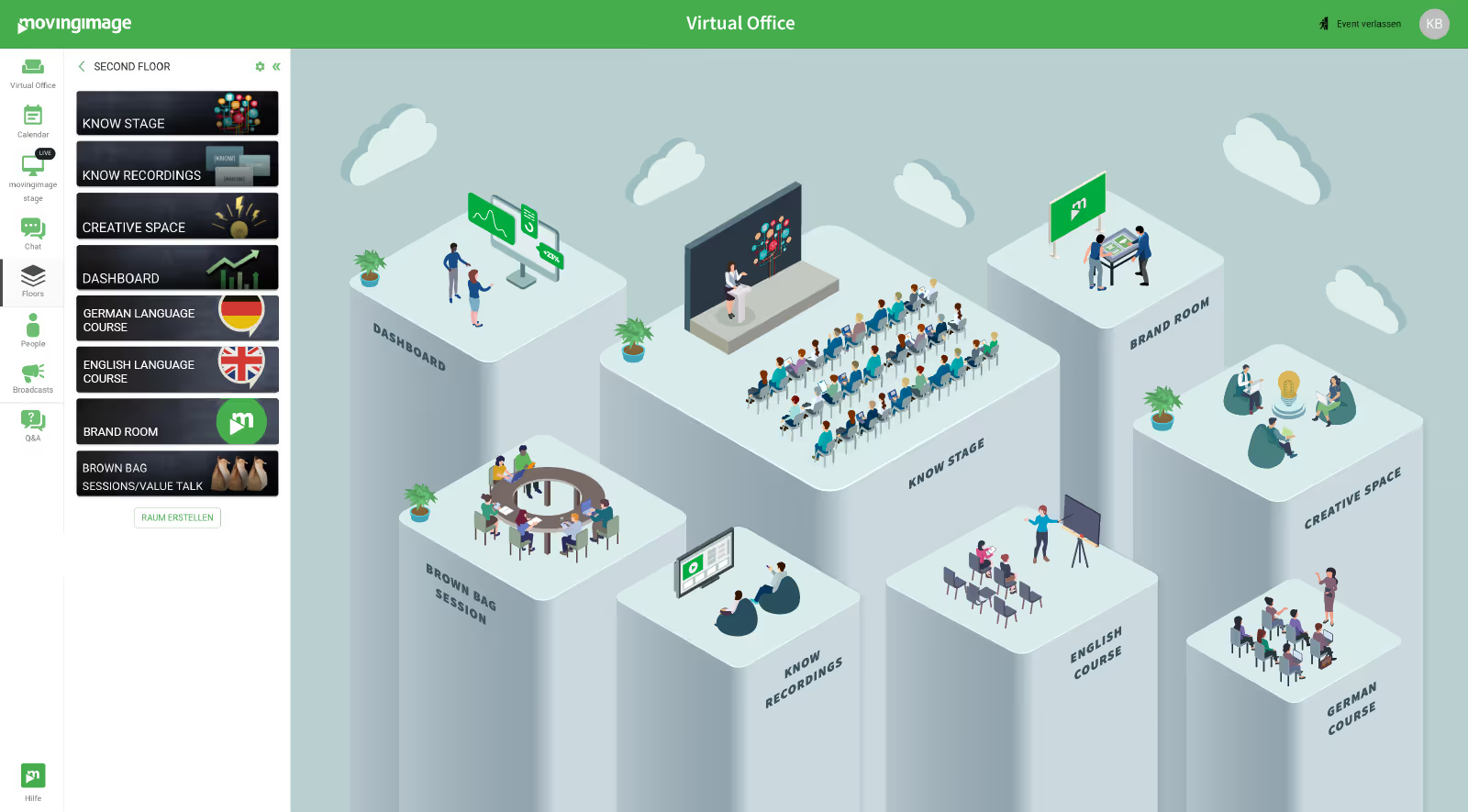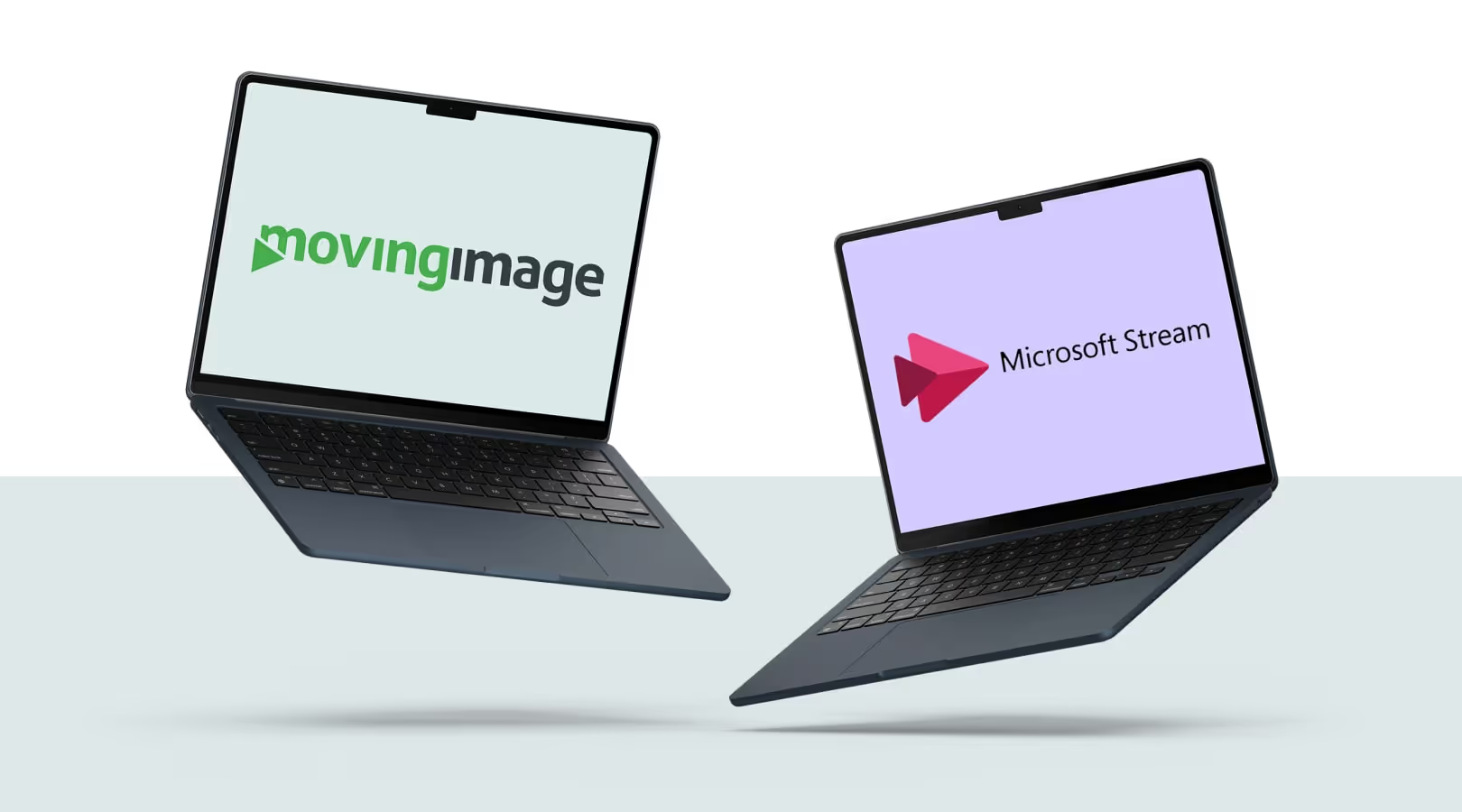Remote onboarding for higher employee satisfaction

Driving your success with video

Remote onboarding for higher employee satisfaction
Why is remote onboarding important?
Effective virtual onboarding is key to successfully integrating new employees—no matter where they work. In the era of New Work, with increasing demands for flexibility in terms of time and location, companies need to adapt accordingly. A strong first impression and clear communication of company culture help new hires build trust quickly and identify with the organization.
Companies should ensure that new employees understand how their role contributes to the company’s overall goals and how their work fits into the bigger picture. This not only strengthens engagement and motivation but also enhances employees' sense of belonging—ultimately leading to greater job satisfaction.
It’s helpful to incorporate your employer branding into the communication right from the start. The first point of contact can take place, for example, via an internal virtual events platform like the one offered by movingimage. When aligned with your branding guidelines, the platform provides a consistent company image from the very first interaction and fosters a sense of team spirit. This is in stark contrast to standard video conferencing tools, which typically don’t reflect your brand identity.
Example: a virtual career event by Charité:

Virtual onboarding is efficient and cost-effective
Virtual remote onboarding offers numerous benefits for both companies and employees. For one, it saves time and money by eliminating the need for in-person meetings. At the same time, new employees can be integrated efficiently, as they can continue to participate in training and orientation sessions anytime and from anywhere—even after the initial onboarding phase. Virtual onboarding is also highly scalable. It makes little difference how many employees join live or access recorded content afterward.
Involving colleagues is, of course, a crucial part of the process. New employees should have the opportunity to connect with their coworkers—even in a digital environment. This can happen through virtual team meetings, group chats, or informal online coffee breaks. Getting entire teams involved helps newcomers feel welcome and quickly become part of the company culture.
Example: a branded virtual office

Streamline processes and save time
An effective onboarding phase with a clear structure that introduces new employees to workflows and procedures not only simplifies the experience for newcomers—it also enhances internal efficiency. Redundant steps can be eliminated, which in turn saves time.
By establishing a standardized and consistent virtual onboarding process, companies can ensure that all new employees receive the necessary information and resources to successfully begin their roles and contribute to the company’s success.
Imagine duplicating a virtual event with just one click and immediately launching it again! Alternatively, you can deploy a virtual event space permanently—such as a virtual office—to serve as a central hub for digital communication. And this applies not only to first introductions: digital training and development sessions can also be hosted here. The overarching goal is to quickly familiarize employees with the company and its workflows while also fostering long-term development.
A solution like movingimage’s CorporateTube also enables central access to video content, allowing employees to retrieve learning materials whenever they need them. This supports flexible, self-paced learning.
Engagement in the digital space
Companies should ensure that they actively engage new employees during the virtual remote onboarding process. This can include hosting introductory rounds or team-building activities. These initiatives help newcomers quickly build connections and feel welcomed within the organization.
Interactive communication is key: using chat functions and emojis can make the experience more relaxed and approachable. Especially during onboarding, where there's a lot of information to absorb, video content can be particularly helpful—it's easier to retain than plain text. This advantage should be amplified through thoughtful and engaging content design.
Regular feedback sessions and evaluations are also essential to ensure that employees integrate smoothly and carry out their responsibilities effectively. Here, too, it makes sense to establish a centralized platform—such as a virtual events platform—as a go-to hub from the initial contact through the completion of onboarding.
Virtual onboarding is therefore an efficient and contemporary method for modern companies. It offers the ability to shorten the onboarding period and reduce costs while allowing new employees to integrate into the team and work more quickly. Moreover, it supports a high level of flexibility and scalability, as training and communication can take place regardless of location or time. A positive remote onboarding experience is a critical factor for employee satisfaction and motivation—and, by extension, a driver of company success. In times of skilled labor shortages, this can be a key competitive advantage.
Our Speakers
Why is remote onboarding important?
Effective virtual onboarding is key to successfully integrating new employees—no matter where they work. In the era of New Work, with increasing demands for flexibility in terms of time and location, companies need to adapt accordingly. A strong first impression and clear communication of company culture help new hires build trust quickly and identify with the organization.
Companies should ensure that new employees understand how their role contributes to the company’s overall goals and how their work fits into the bigger picture. This not only strengthens engagement and motivation but also enhances employees' sense of belonging—ultimately leading to greater job satisfaction.
It’s helpful to incorporate your employer branding into the communication right from the start. The first point of contact can take place, for example, via an internal virtual events platform like the one offered by movingimage. When aligned with your branding guidelines, the platform provides a consistent company image from the very first interaction and fosters a sense of team spirit. This is in stark contrast to standard video conferencing tools, which typically don’t reflect your brand identity.
Example: a virtual career event by Charité:

Virtual onboarding is efficient and cost-effective
Virtual remote onboarding offers numerous benefits for both companies and employees. For one, it saves time and money by eliminating the need for in-person meetings. At the same time, new employees can be integrated efficiently, as they can continue to participate in training and orientation sessions anytime and from anywhere—even after the initial onboarding phase. Virtual onboarding is also highly scalable. It makes little difference how many employees join live or access recorded content afterward.
Involving colleagues is, of course, a crucial part of the process. New employees should have the opportunity to connect with their coworkers—even in a digital environment. This can happen through virtual team meetings, group chats, or informal online coffee breaks. Getting entire teams involved helps newcomers feel welcome and quickly become part of the company culture.
Example: a branded virtual office

Streamline processes and save time
An effective onboarding phase with a clear structure that introduces new employees to workflows and procedures not only simplifies the experience for newcomers—it also enhances internal efficiency. Redundant steps can be eliminated, which in turn saves time.
By establishing a standardized and consistent virtual onboarding process, companies can ensure that all new employees receive the necessary information and resources to successfully begin their roles and contribute to the company’s success.
Imagine duplicating a virtual event with just one click and immediately launching it again! Alternatively, you can deploy a virtual event space permanently—such as a virtual office—to serve as a central hub for digital communication. And this applies not only to first introductions: digital training and development sessions can also be hosted here. The overarching goal is to quickly familiarize employees with the company and its workflows while also fostering long-term development.
A solution like movingimage’s CorporateTube also enables central access to video content, allowing employees to retrieve learning materials whenever they need them. This supports flexible, self-paced learning.
Engagement in the digital space
Companies should ensure that they actively engage new employees during the virtual remote onboarding process. This can include hosting introductory rounds or team-building activities. These initiatives help newcomers quickly build connections and feel welcomed within the organization.
Interactive communication is key: using chat functions and emojis can make the experience more relaxed and approachable. Especially during onboarding, where there's a lot of information to absorb, video content can be particularly helpful—it's easier to retain than plain text. This advantage should be amplified through thoughtful and engaging content design.
Regular feedback sessions and evaluations are also essential to ensure that employees integrate smoothly and carry out their responsibilities effectively. Here, too, it makes sense to establish a centralized platform—such as a virtual events platform—as a go-to hub from the initial contact through the completion of onboarding.
Virtual onboarding is therefore an efficient and contemporary method for modern companies. It offers the ability to shorten the onboarding period and reduce costs while allowing new employees to integrate into the team and work more quickly. Moreover, it supports a high level of flexibility and scalability, as training and communication can take place regardless of location or time. A positive remote onboarding experience is a critical factor for employee satisfaction and motivation—and, by extension, a driver of company success. In times of skilled labor shortages, this can be a key competitive advantage.



.avif)


.avif)






.avif)





